Interlaken: Switzerland’s Adventure Paradise
Disclosure: This post contains affiliate links. If you buy through them, I’ll earn a small commission at no extra cost to you. Thanks for supporting my work!
Nestled between two pristine alpine lakes in the heart of Switzerland’s Bernese Oberland region, Interlaken stands as a gateway to some of the most breathtaking natural scenery in Europe. This charming Swiss town, whose name literally means “between lakes,” offers visitors an unparalleled combination of stunning mountain vistas, crystal-clear waters, and adrenaline-pumping adventures that make it a must-visit destination for travelers of all types.
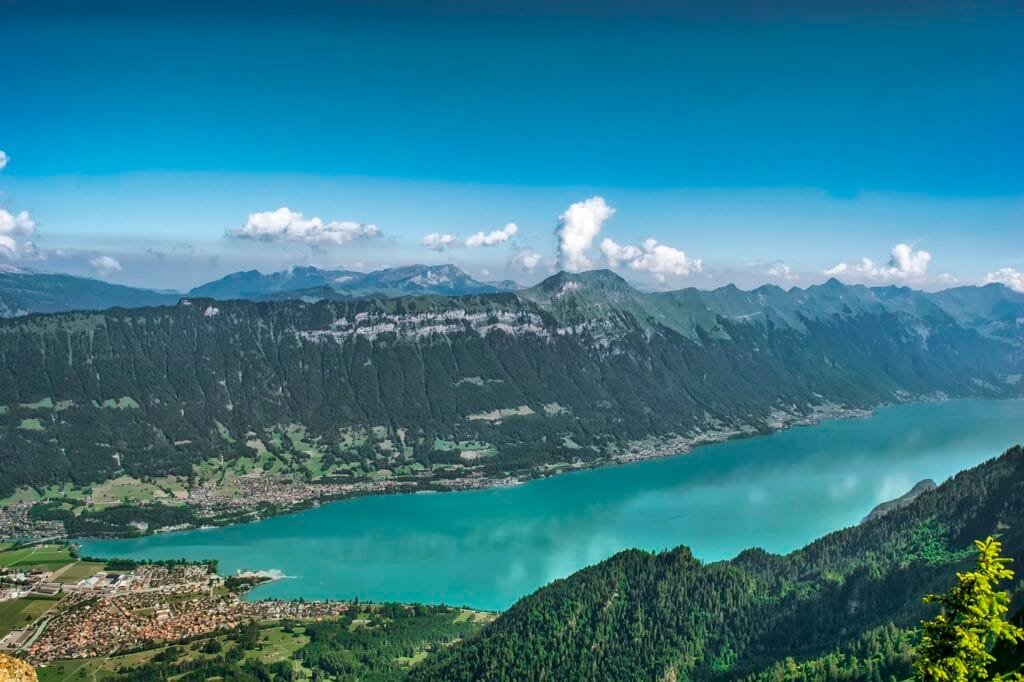
Whether you’re seeking the thrill of paragliding with views of snow-capped Alps, a peaceful boat cruise on turquoise waters, or simply wanting to experience authentic Swiss culture in a picture-perfect setting, Interlaken delivers experiences that will leave you with memories to last a lifetime. Its strategic location makes it not only a wonderful destination in itself but also the perfect base for exploring the wider Bernese Oberland region, including iconic Swiss landmarks like the Jungfraujoch – Top of Europe.
In this comprehensive guide, we’ll walk you through everything you need to know to plan the perfect Interlaken getaway – from the best times to visit and how to get there, to where to stay, what to do, and practical tips that will help you make the most of your Swiss adventure.
Key Takeaways
- Interlaken is ideally located between Lake Thun and Lake Brienz, offering stunning alpine scenery and access to the Jungfrau region
- The town serves as an excellent base for exploring the Bernese Oberland with convenient transportation connections
- Best visited in summer (June-September) for hiking and water activities or winter (December-March) for snow sports
- Accommodation options range from luxury lakeside hotels to budget-friendly hostels and mountain chalets
- Interlaken is known as Switzerland’s adventure capital, offering activities like paragliding, skydiving, and hiking
- A minimum stay of 3 days is recommended, though a week allows for deeper exploration of the region
- The Swiss Travel Pass provides excellent value for transportation throughout the region
- Both Lake Thun and Lake Brienz offer scenic boat cruises with multiple stop-off points
- Day trips to Jungfraujoch, Lauterbrunnen, Grindelwald, and Schilthorn are highly recommended
- The region can be expensive, so budget accordingly and consider visiting during shoulder seasons for better deals
Where is Interlaken & How to Get There
Interlaken is located in the west of Switzerland, in the beautiful Bernese Oberland region. Situated between Lake Thun and Lake Brienz (hence its name, which means “between lakes”), this picturesque town serves as a gateway to the magnificent Jungfrau region and the Swiss Alps.
Getting to Interlaken
Switzerland’s efficient transportation system makes reaching Interlaken straightforward from most major cities and international destinations.
By Train
The Swiss railway system is renowned for its punctuality and extensive network, making train travel the most convenient way to reach Interlaken.
Interlaken has two main train stations:
- Interlaken Ost (East): Closer to Lake Brienz and the Old Town, this is the main hub for mountain excursions to Jungfraujoch, Lauterbrunnen, and Grindelwald
- Interlaken West: Closer to Lake Thun and convenient for those staying on the western side of town
Direct trains connect Interlaken to major Swiss cities:
- From Zurich: 2 hours
- From Bern: 1 hour
- From Geneva: 3 hours
- From Basel: 2 hours
If you’re planning to use trains extensively during your stay, consider purchasing a Swiss Travel Pass for unlimited travel on trains, buses, and boats throughout Switzerland. The Swiss Travel Pass is particularly valuable for visitors planning to explore multiple regions, as it covers not only transportation but also offers free entry to many museums and discounts on mountain excursions.
For those who prefer more flexibility with a smaller budget, the Swiss Half Fare Card is an excellent alternative, giving you 50% off most train, bus, and boat journeys.
By Air
While Interlaken doesn’t have its own airport, several options are available:
- Zurich Airport (ZRH): Switzerland’s largest international airport, with direct trains to Interlaken (approximately 2 hours)
- Bern Airport (BRN): The closest airport to Interlaken, though smaller with fewer international connections
- Geneva Airport (GVA): Well-connected internationally with train connections to Interlaken (approximately 3 hours)
- Basel Airport (BSL): Another option with good train connections to Interlaken
From any of these airports, the most convenient way to reach Interlaken is by train. The Swiss Federal Railways (SBB) offers direct connections from airport train stations.
For the best flight deals to Switzerland, check Cheap-O-Air which often offers competitive rates on international flights to Swiss airports.
By Car
Driving to Interlaken gives you flexibility to explore the surrounding areas at your own pace. Switzerland’s roads are well-maintained and scenic, though mountain routes can be challenging in winter.
If you’re planning to rent a car, Discover Car offers competitive rates and a wide selection of vehicles suitable for mountain driving. Their comprehensive insurance options are particularly valuable for navigating Switzerland’s mountain roads with peace of mind.
Parking in Interlaken can be limited and expensive during peak tourist seasons. Most hotels offer parking for a fee, and there are several public parking areas throughout the town. The Sepp app is useful for finding and paying for parking in Switzerland.
Airport Transfers
For a hassle-free journey from the airport to Interlaken, consider booking an airport transfer with KiwiTaxi. This is especially convenient if you’re traveling with a lot of luggage or in a group, as the driver will meet you at the airport and take you directly to your accommodation in Interlaken.
Getting Around Interlaken
Interlaken is a compact town that’s easy to explore on foot. The main street, Höheweg, runs through the center of town and is lined with shops, restaurants, and hotels.
For longer distances or trips to surrounding areas:
- Local Buses: Interlaken has an efficient local bus network that connects both train stations and major attractions
- Boats: Regular boat services operate on both Lake Thun and Lake Brienz, offering a scenic way to explore the region
- Mountain Railways: Special mountain trains and cable cars connect Interlaken to surrounding mountain destinations like Harder Kulm, Schynige Platte, and the Jungfrau region
- Bicycle Rentals: Available at both train stations, offering a pleasant way to explore the flat areas around the lakes
Most hotels provide guests with the Interlaken Guest Card, which offers free travel on local buses and discounts on various attractions.
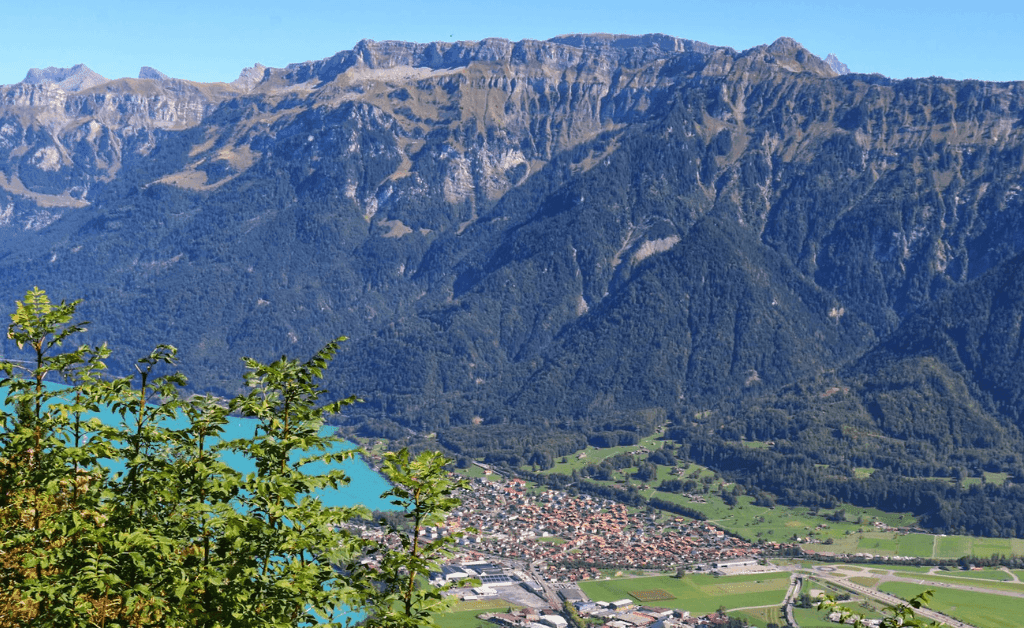
Best Time to Visit Interlaken
Interlaken is a year-round destination, with each season offering its own unique charm and activities. When to visit depends largely on what you want to experience during your stay.
Summer (June to September)
Summer is peak tourist season in Interlaken, and for good reason. The weather is warm and pleasant, with temperatures typically ranging from 18°C to 25°C (64°F to 77°F).
Advantages of visiting in summer:
- Ideal conditions for hiking, paragliding, and water sports
- Longer daylight hours for sightseeing
- All mountain railways, cable cars, and boat services operate at full schedule
- Vibrant atmosphere with outdoor dining and events
- Lush green landscapes and blooming alpine flowers
Disadvantages:
- Higher prices for accommodation and activities
- More crowded attractions and transportation
- Need to book popular experiences in advance
Tip: If visiting in summer, book your accommodation and Jungfraujoch excursion well in advance to secure the best rates and availability. For accommodations, Booking.com offers a wide range of options with free cancellation policies, while Get Your Guide allows you to reserve popular excursions like the Jungfraujoch trip ahead of time.
Spring (April to May) and Fall (October to November)
The shoulder seasons offer a wonderful balance of decent weather, fewer crowds, and lower prices.
Advantages of visiting in spring and fall:
- Fewer tourists at major attractions
- More affordable accommodation rates
- Pleasant temperatures for sightseeing and light hiking
- Beautiful spring blooms or autumn foliage
Disadvantages:
- More variable weather conditions
- Some mountain facilities may operate on reduced schedules
- Cooler temperatures, especially in the mountains
Tip: Pack layers and be prepared for sudden weather changes, particularly if you plan to visit higher elevations. For the best deals on accommodations during these seasons, check Trivago which compares prices across multiple booking platforms.
Winter (December to March)
Winter transforms Interlaken and the surrounding region into a snowy wonderland, perfect for winter sports enthusiasts.
Advantages of visiting in winter:
- Excellent skiing and snowboarding in nearby resorts
- Magical snow-covered landscapes
- Christmas markets and festive atmosphere in December
- Winter hiking and snowshoeing opportunities
- Fewer crowds at some attractions (except during holiday periods)
Disadvantages:
- Cold temperatures, especially at higher elevations
- Some hiking trails and mountain passes may be closed
- Shorter daylight hours
- Higher prices during the Christmas/New Year period and school holidays
Tip: If you’re not interested in winter sports, January and February (outside of school holidays) can offer lower accommodation rates while still providing the beautiful winter scenery. For winter sports equipment rental and lessons, check the packages available through Get Your Guide.
The Verdict: When Should You Go?
The best time to visit Interlaken ultimately depends on your interests:
- For hiking and outdoor adventures: Late June to early September
- For winter sports: December to March
- For fewer crowds and better deals: May, early June, late September, and October
- For photography: Spring for flowers and waterfalls, autumn for foliage, winter for snow-capped peaks
Remember that Switzerland can be expensive, especially during peak seasons. If you’re traveling on a budget, consider visiting during shoulder seasons when you can enjoy pleasant weather with significantly lower prices.
Before traveling, it’s wise to secure comprehensive travel insurance. Visitors Coverage offers plans specifically designed for travelers to Switzerland, covering emergency medical expenses, trip cancellations, and adventure activities.
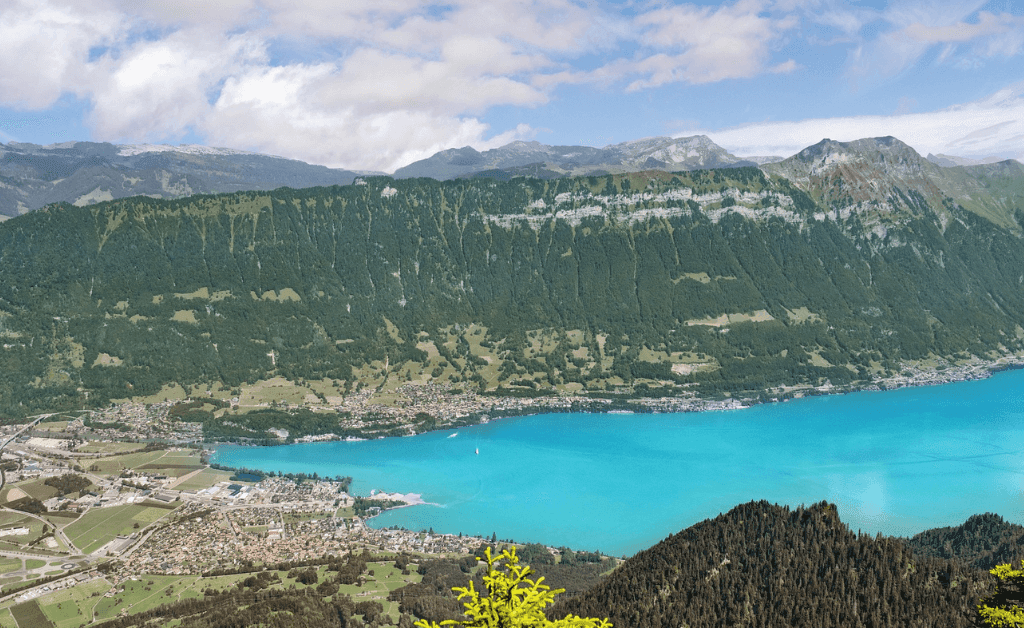
Where to Stay in Interlaken
Interlaken offers a wide range of accommodation options to suit every budget and travel style. From luxury lakeside hotels to cozy mountain chalets and budget-friendly hostels, you’ll find something that meets your needs. Here’s a comprehensive guide to help you choose the perfect place to stay.
Interlaken City Center
Staying in central Interlaken puts you within walking distance of restaurants, shops, and transportation hubs, making it an ideal choice for first-time visitors.
Advantages:
- Convenient access to both train stations (Interlaken Ost and West)
- Walking distance to restaurants, shops, and attractions
- Easy access to public transportation
- Vibrant atmosphere
Best areas in central Interlaken:
- Near Höheweg: The main promenade offers stunning mountain views and proximity to shops and restaurants
- Near Interlaken Ost: Convenient for mountain excursions to Jungfraujoch and the surrounding region
- Near Interlaken West: Closer to Lake Thun and quieter than the eastern part of town
Recommended accommodations:
Luxury options:
- Victoria Jungfrau Grand Hotel & Spa: A historic 5-star property with mountain views and exceptional amenities
- Lindner Grand Hotel Beau Rivage: Elegant rooms with panoramic views of the Jungfrau massif
Mid-range options:
- Hotel Interlaken: A charming hotel in a central location with comfortable rooms
- Hotel Bernerhof: Well-located property with mountain views and reasonable rates
Budget options:
- Backpackers Villa Sonnenhof: Clean, well-maintained hostel with private and dormitory rooms
- Youth Hostel Interlaken: Affordable option near Interlaken Ost station
Check hotel availability and prices in Interlaken
Lakeside Accommodations
For a more tranquil experience, consider staying along the shores of either Lake Thun or Lake Brienz.
Lake Thun area:
- More developed with charming lakeside towns
- Warmer water for swimming in summer
- Beautiful sunset views over the mountains
- Convenient boat connections to Thun and other lakeside villages
Lake Brienz area:
- Known for its turquoise waters
- More rugged and less developed shoreline
- Proximity to Giessbach Falls and other natural attractions
- Quieter atmosphere
For budget-conscious travelers, Hostelworld offers excellent options around the lakes with stunning views at a fraction of hotel prices.
Find lakeside accommodations around Interlaken
Surrounding Villages
Staying in one of the picturesque villages near Interlaken offers a more authentic Swiss experience while still providing easy access to all the region has to offer.
Lauterbrunnen:
Located in a stunning valley with 72 waterfalls, Lauterbrunnen is just a 20-minute train ride from Interlaken. It offers quintessential Swiss chalet accommodations and serves as a gateway to Wengen, Mürren, and the Jungfrau region.
Grindelwald:
This mountain village sits at the foot of the Eiger North Face and offers spectacular mountain views. It’s perfect for those who want direct access to hiking trails and ski slopes. Check Grindelwald hotel options
Thun:
Located at the western end of Lake Thun, this charming town offers a more authentic Swiss experience with its medieval old town, castle, and riverside setting.
Brienz:
Known for its traditional woodcarving, this village on the eastern shore of Lake Brienz offers a peaceful setting away from the tourist crowds.
For families or groups, Trip.com often has great deals on apartment rentals in these surrounding villages, providing more space and kitchen facilities.
Explore accommodations in villages around Interlaken
Accommodation Tips
- Book in advance: Especially during high season (summer and winter holidays), accommodations fill up quickly
- Consider location: Stay near a train station if you plan to use public transportation frequently
- Check for guest cards: Many hotels provide the Interlaken Guest Card, which offers free local bus travel and discounts on attractions
- Look for views: A room with a mountain view can enhance your Swiss experience
- Budget accordingly: Switzerland is expensive, so set realistic expectations for accommodation costs
- Consider apartment rentals: For longer stays or family trips, apartment rentals can offer better value and more space

Top Things to Do in Interlaken
Interlaken is known as Switzerland’s adventure capital, offering an incredible array of activities for thrill-seekers and nature lovers alike. From heart-pounding extreme sports to peaceful lake cruises and cultural experiences, there’s something for everyone in this alpine paradise.
Must-Visit Attractions
1. Jungfraujoch – Top of Europe
No visit to Interlaken is complete without a trip to the legendary Jungfraujoch, Europe’s highest railway station at 3,454 meters (11,332 feet) above sea level. This UNESCO World Heritage site offers breathtaking panoramic views of the Aletsch Glacier and surrounding Alpine peaks.
The journey itself is spectacular, taking you through picturesque mountain villages and stunning landscapes. With the opening of the Eiger Express in 2020, you can now reach Jungfraujoch from Interlaken in just 1.5 hours.
What to expect at Jungfraujoch:
- Ice Palace with intricate ice sculptures
- Alpine Sensation exhibition on the history of the mountain
- Sphinx Observatory viewing platform
- Snow Fun Park (seasonal)
- Multiple restaurants including the highest-altitude Indian restaurant in Europe
Tips for visiting:
- Start early to avoid crowds and have the best chance of clear weather
- Check the weather forecast before booking – visibility is crucial
- Dress warmly as temperatures remain cold year-round
- Book your tickets in advance to secure your preferred time slot
- Consider the Swiss Travel Pass for discounted access
Book your Jungfraujoch excursion from Interlaken
2. Harder Kulm
For the best views of Interlaken and its surroundings, head to Harder Kulm, the town’s local mountain. A short funicular ride takes you to the summit at 1,322 meters (4,337 feet), where you’ll find the panoramic “Two Lakes Bridge” viewing platform overlooking both Lake Thun and Lake Brienz with the town nestled between them.
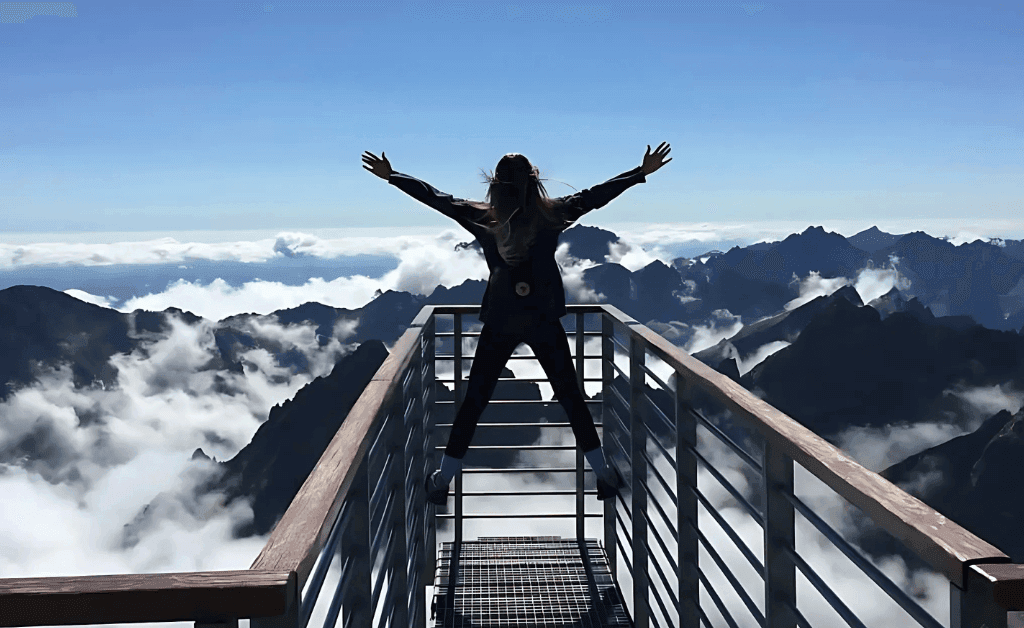
Highlights:
- Spectacular panoramic views of Interlaken and the Jungfrau massif
- Mountain restaurant with traditional Swiss cuisine
- Easy hiking trails suitable for all fitness levels
- Folk performances during summer months
Book your Harder Kulm experience
3. Lake Cruises
Exploring the turquoise waters of Lake Thun and Lake Brienz is a must-do activity in Interlaken. Regular boat services operate on both lakes, allowing you to enjoy the stunning mountain scenery from a different perspective.
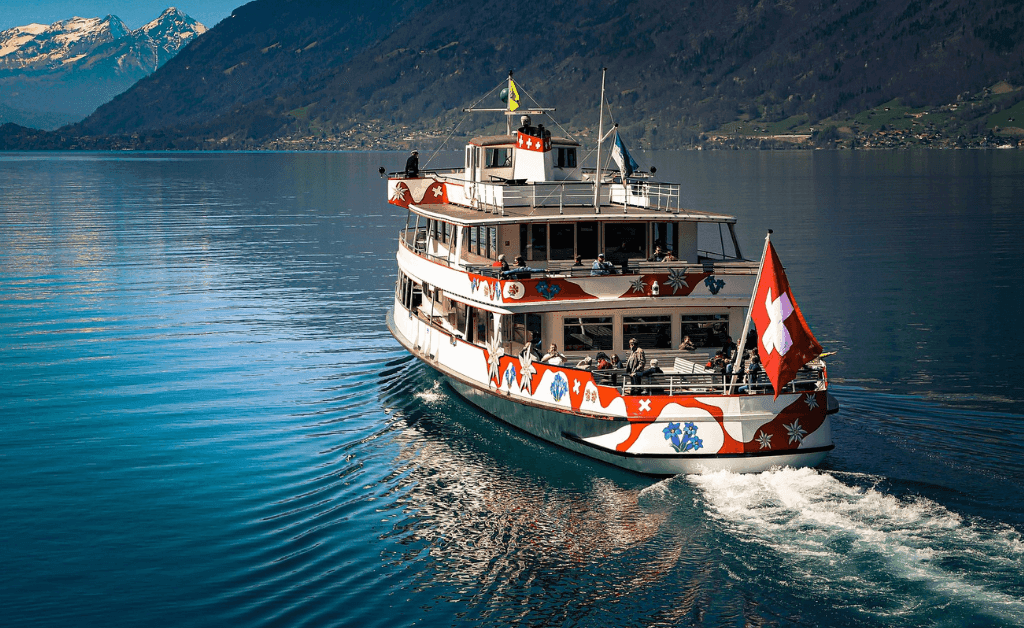
Lake Thun highlights:
- Medieval castles along the shoreline (Oberhofen, Spiez, Thun)
- Charming lakeside villages
- St. Beatus Caves
- Year-round boat service
Lake Brienz highlights:
- Turquoise waters
- Giessbach Falls and historic Grandhotel Giessbach
- Traditional village of Brienz known for woodcarving
- Scenic railway connections to Brienzer Rothorn
Book a Lake Thun or Lake Brienz cruise
Adventure Activities
Interlaken has earned its reputation as Switzerland’s adventure capital with an impressive array of adrenaline-pumping activities.
1. Paragliding
Soar like a bird over Interlaken with a tandem paragliding flight. Taking off from nearby mountains, you’ll glide over the lakes and town with the Alps as your backdrop. No experience is necessary as you’ll fly with a certified instructor.
Book your tandem paragliding experience
2. Skydiving
For the ultimate thrill, try skydiving over one of the world’s most beautiful landscapes. After a brief training session, you’ll board a helicopter or plane and jump in tandem with an experienced instructor, free-falling at 200 km/h before your parachute opens to reveal spectacular views.
3. Canyoning and Rafting
The region’s rivers and gorges provide perfect conditions for canyoning and white-water rafting. These guided adventures take you through stunning natural formations as you jump, slide, and swim through crystal-clear waters.
4. Winter Sports
In winter, Interlaken serves as a gateway to world-class ski resorts in the Jungfrau region, including Grindelwald, Wengen, and Mürren. With over 200 km of ski runs catering to all skill levels, it’s a winter sports paradise.
Day Trips from Interlaken
Interlaken’s central location makes it perfect for exploring the wider Bernese Oberland region.
1. Lauterbrunnen Valley
Often called Switzerland’s most beautiful valley, Lauterbrunnen is famous for its 72 waterfalls, including the impressive Staubbach Falls. The valley’s vertical cliff faces and traditional Swiss chalets create a picture-perfect landscape that inspired J.R.R. Tolkien’s Rivendell.
2. Grindelwald and First
The mountain village of Grindelwald offers access to the First summit, where you can enjoy activities like the First Cliff Walk, zip-lining, mountain carting, and trottibike scooters. In winter, it transforms into a popular ski resort.
Book a day trip to Grindelwald and First
3. Schilthorn and Piz Gloria
Made famous by the James Bond film “On Her Majesty’s Secret Service,” Schilthorn offers 360-degree views of over 200 mountain peaks. The revolving restaurant Piz Gloria serves meals with a constantly changing panoramic backdrop.
4. Brienz and the Brienzer Rothorn
The traditional village of Brienz is known for its woodcarving tradition and the historic steam railway that climbs to the Brienzer Rothorn summit, offering spectacular views of Lake Brienz and the surrounding mountains.
For those interested in exploring beyond the immediate region, consider day trips to other iconic Swiss destinations like the Bernina Express or Glacier Express scenic train routes.

Dining and Local Cuisine in Interlaken
Switzerland is known for its delicious cuisine, and Interlaken offers plenty of opportunities to sample traditional Swiss dishes alongside international options. From cozy mountain chalets serving fondue to upscale restaurants with lake views, there’s something to satisfy every palate.
Traditional Swiss Dishes to Try
When in Switzerland, sampling the local cuisine is a must. Here are some traditional dishes you shouldn’t miss:
Cheese Fondue
This iconic Swiss dish consists of melted cheese (typically Gruyère and Emmental) mixed with white wine and served in a communal pot. Diners dip pieces of bread into the cheese using long-stemmed forks. It’s the perfect warming meal after a day in the mountains.
Raclette
Another cheese-based dish, raclette involves melting the edge of a wheel of cheese and scraping the melted portion onto boiled potatoes, pickled onions, and gherkins. Many restaurants offer raclette evenings where you can melt your own cheese at the table.
Rösti
Similar to hash browns, rösti is made from grated potatoes that are fried until crispy on the outside and soft on the inside. It’s often served as a side dish but can also be topped with cheese, bacon, or a fried egg for a heartier meal.
Swiss Chocolate
Switzerland is world-famous for its chocolate, and no visit would be complete without indulging in some high-quality Swiss chocolate. Look for local chocolatiers in Interlaken where you can purchase freshly made treats.
For chocolate lovers, consider bringing home some authentic Swiss chocolate as souvenirs. You can find premium Swiss chocolate brands on Amazon with international shipping options.
As an Amazon Associate, I earn from qualifying purchases.
Where to Eat in Interlaken
Budget-Friendly Options
- Bistro Unique: Casual eatery offering Swiss and international dishes at reasonable prices
- Barracuda Café: Popular spot for burgers, sandwiches, and salads
- Hüsi Bierhaus: Local brewery with good pub food and craft beers
- Migros or Coop Restaurants: These supermarket restaurants offer decent meals at affordable prices
Mid-Range Restaurants
- Restaurant Laterne: Cozy restaurant serving traditional Swiss cuisine including excellent fondue
- Little Thai: Authentic Thai cuisine for when you need a break from cheese and potatoes
- Bären Restaurant: Classic Swiss dishes in a traditional setting
- Stadthaus: Central location with a varied menu of Swiss and international dishes
Fine Dining
- Restaurant Belvédère: Elegant dining with panoramic views and sophisticated Swiss cuisine
- Restaurant Luegibrüggli: Upscale restaurant with stunning views of the Jungfrau massif
- Victoria Jungfrau Grand Hotel Restaurants: Several high-end dining options within this luxury hotel
Mountain Restaurants
Some of the best dining experiences in the region can be found at mountain restaurants, accessible by cable car or hiking trails:
- Harder Kulm Panorama Restaurant: Stunning views complemented by traditional Swiss cuisine
- Schynige Platte Mountain Restaurant: Historic restaurant serving regional specialties with panoramic Alpine views
- Piz Gloria Revolving Restaurant: Located on Schilthorn, this revolving restaurant offers 360-degree views while you dine
Dining Tips
- Reservations: During high season, it’s advisable to book tables in advance, especially for popular restaurants
- Tipping: Service is typically included in the bill in Switzerland, but rounding up or adding 5-10% for exceptional service is appreciated
- Water: Tap water is safe to drink throughout Switzerland, but restaurants will charge for bottled water
- Opening Hours: Many restaurants close in the afternoon between lunch and dinner service (typically 2-6 PM)
- Vegetarian Options: Most restaurants offer vegetarian dishes, though vegan options might be more limited
- Cost: Dining out in Switzerland is expensive compared to many other countries; budget accordingly
Self-Catering Options
If you’re staying in an apartment or looking to save money, self-catering is a good option:
- Supermarkets: Migros and Coop are the main supermarket chains, offering a wide range of products
- Bakeries: Swiss bakeries offer fresh bread, pastries, and sandwiches perfect for picnics
- Farmers’ Markets: Check for local markets where you can purchase fresh, regional products
- Picnic Spots: The shores of Lake Thun and Lake Brienz offer perfect settings for a picnic with a view
For restaurant reviews and recommendations, check TripAdvisor for up-to-date information and local favorites.
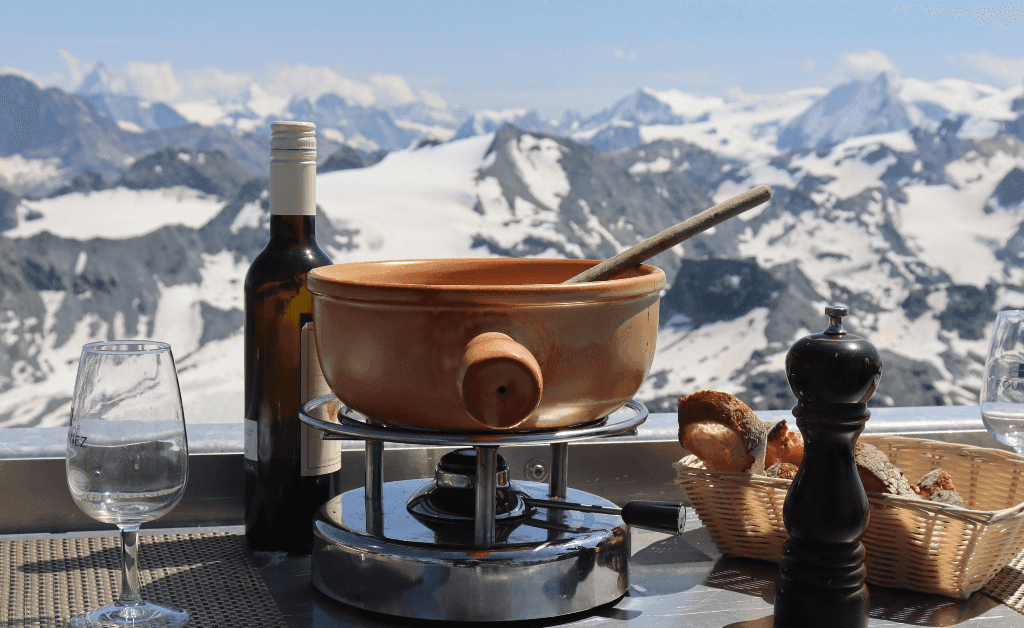
Practical Travel Tips for Interlaken
To help you make the most of your Interlaken adventure, here are some essential travel tips covering everything from budgeting to local customs and practical information.
Money Matters
Switzerland is one of the most expensive countries in Europe, so budgeting appropriately is essential.
- Currency: Switzerland uses the Swiss Franc (CHF), not the Euro. While some places accept Euros, you’ll typically receive change in Swiss Francs at unfavorable exchange rates.
- Cash vs. Cards: Credit and debit cards are widely accepted, but it’s good to carry some cash for smaller establishments and mountain huts.
- ATMs: Widely available in Interlaken and larger towns, but may be limited in smaller villages.
- Tipping: Service is typically included in bills. Rounding up or adding 5-10% for exceptional service is appreciated but not expected.
- Budget Planning: Expect to spend approximately:
- Budget traveler: 100-150 CHF per day
- Mid-range traveler: 200-300 CHF per day
- Luxury traveler: 400+ CHF per day
Saving Money in Switzerland
- Travel Pass: If you plan to use public transportation extensively, the Swiss Travel Pass or Swiss Half Fare Card can offer significant savings.
- Accommodation: Consider staying in hostels, budget hotels, or apartment rentals. Booking in advance usually secures better rates.
- Dining: Self-catering or eating lunch at cafés and bakeries can save money. Many hotels offer breakfast included in the room rate.
- Water: Tap water is excellent throughout Switzerland. Bring a reusable water bottle instead of buying bottled water.
- Shoulder Season: Visiting during May, June, September, or October offers lower prices while still providing good weather.
Packing Essentials
Switzerland’s mountain weather can be unpredictable, so packing appropriately is crucial:
- Layered Clothing: Temperatures can vary significantly between valleys and mountain peaks.
- Waterproof Jacket: Rain can occur year-round, especially in the mountains.
- Comfortable Walking Shoes: Essential for exploring towns and easy hiking trails.
- Hiking Boots: If you plan to hit the trails, proper footwear is a must.
- Sunscreen and Sunglasses: The sun is intense at higher altitudes, even on cloudy days.
- Swimwear: For lake swimming in summer or hotel pools/spas.
- Adapter: Switzerland uses Type J plugs (three round pins), though many places also accept European Type C plugs.
- Camera: You’ll want to capture the stunning scenery.
For quality hiking gear and travel accessories, check out these recommended travel products for Switzerland.
Health and Safety
Switzerland is one of the safest countries in the world, with excellent healthcare.
- Travel Insurance: While Switzerland is safe, comprehensive travel insurance is recommended to cover medical emergencies and adventure activities. Check travel insurance options
- Emergency Numbers: 112 (General Emergency), 144 (Ambulance), 117 (Police)
- Pharmacies: Marked with a green cross, pharmacists can provide advice for minor ailments.
- Mountain Safety: Always check weather forecasts before mountain excursions and inform someone of your plans if hiking independently.
- Altitude Sickness: Can affect visitors to high-altitude destinations like Jungfraujoch. Stay hydrated and ascend slowly.
For adventure travelers, specialized insurance from SafetyWing covers extreme sports and mountain activities that standard policies might exclude.
Communication and Connectivity
- Languages: German is the main language in the Interlaken region, but English is widely spoken in tourist areas.
- Wi-Fi: Available in most hotels, restaurants, and public spaces.
- Mobile Data: Consider purchasing a local SIM card or an eSIM for data access. Yesim eSIM Cards offer convenient options for travelers.
- Apps to Download: SBB Mobile (Swiss train schedules), MeteoSwiss (weather forecasts), Switzerland Mobility (hiking trails)
Swiss Etiquette and Customs
- Punctuality: Swiss people value punctuality. Trains, buses, and tours depart exactly on schedule.
- Greetings: A handshake is the common greeting. In German-speaking areas, “Grüezi” (hello) and “Danke” (thank you) are appreciated phrases.
- Quiet Hours: Respect quiet hours (typically 10 PM to 7 AM) in residential areas and accommodations.
- Recycling: Switzerland has strict recycling policies. Follow local guidelines for waste disposal.
- Hiking Etiquette: Greet fellow hikers with “Grüezi” or “Hallo” when passing on trails.
Sustainable Travel
Switzerland is committed to environmental protection, and sustainable travel practices are encouraged:
- Public Transportation: Use Switzerland’s excellent public transport network instead of renting a car.
- Respect Nature: Stay on marked trails, don’t litter, and respect wildlife and plant life.
- Local Products: Support local businesses and try regional products.
- Water Conservation: Despite abundant water resources, conservation is appreciated.
- Eco-Friendly Accommodations: Many Swiss hotels have strong sustainability practices.
For more tips on sustainable travel in Switzerland, check out this guide on traveling in Switzerland on a budget.
Final Tips
- Photography: The Höhematte park in central Interlaken offers classic views of the Jungfrau massif.
- Tourist Information: Visit the tourist office near Interlaken Ost station for maps, brochures, and local advice.
- Weather Apps: Mountain weather can change quickly. Check forecasts regularly using the MeteoSwiss app.
- Advance Bookings: Reserve popular activities like Jungfraujoch excursions in advance, especially during high season.
- Guest Card: Most accommodations provide the Interlaken Guest Card, offering free local bus travel and discounts.
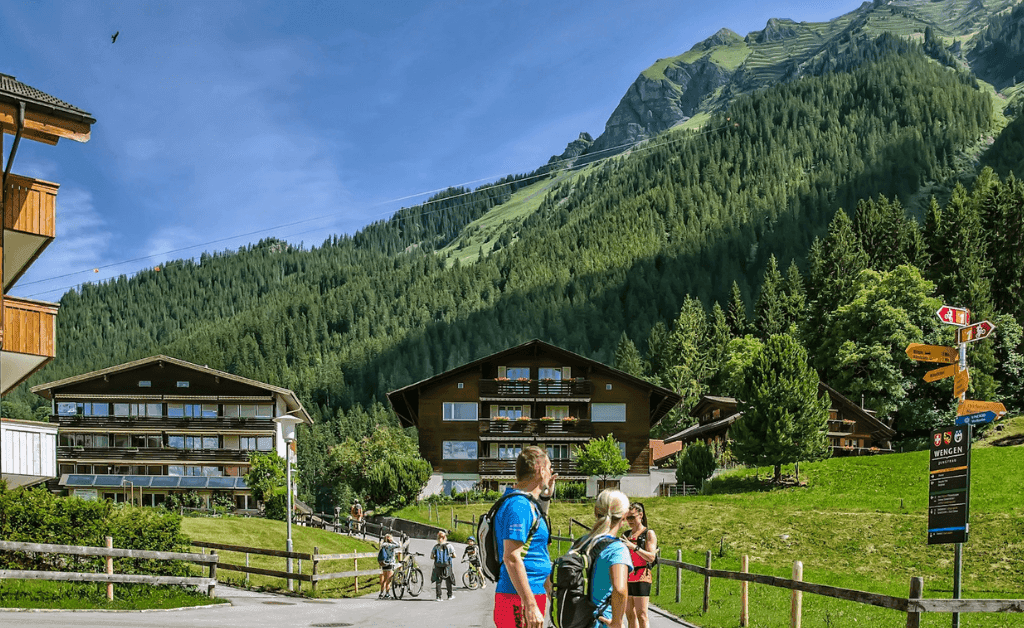
Conclusion
Interlaken truly deserves its reputation as one of Switzerland’s most captivating destinations. With its stunning location between two lakes, backdrop of snow-capped mountains, and endless array of activities, it offers something for every type of traveler throughout the year.
Whether you’re seeking adrenaline-pumping adventures like paragliding and skydiving, peaceful moments on crystal-clear lakes, cultural experiences in charming Swiss villages, or simply want to stand in awe of some of Europe’s most magnificent mountain scenery, Interlaken delivers unforgettable experiences.
Use this guide to plan your perfect Interlaken getaway, but remember that sometimes the most memorable moments come from unexpected discoveries. Allow yourself time to wander through alpine meadows, chat with locals in a cozy café, or simply sit by the lakeside and absorb the natural beauty that surrounds you.
Switzerland may be known for its precision and organization, but in Interlaken, you’ll also discover the joy of slowing down and connecting with nature in one of the world’s most beautiful settings. From the moment you arrive until your reluctant departure, Interlaken’s special magic will captivate your heart and leave you planning your return before you’ve even left.
So pack your camera, bring your sense of adventure, and prepare for an unforgettable Swiss journey in Interlaken – where lakes, mountains, and memories await.
Frequently Asked Questions
Is Interlaken worth visiting?
Absolutely! Interlaken is one of Switzerland’s most spectacular destinations, offering stunning mountain scenery, crystal-clear lakes, and endless outdoor activities. It serves as the perfect base for exploring the Bernese Oberland region and iconic attractions like Jungfraujoch. Whether you’re an adventure enthusiast, nature lover, or cultural traveler, Interlaken offers unforgettable experiences year-round.
How many days do I need in Interlaken?
A minimum of 3 days is recommended to experience Interlaken’s highlights, including a day trip to Jungfraujoch and exploration of the lakes. However, 5-7 days would be ideal to fully appreciate the region, allowing time for day trips to surrounding villages like Lauterbrunnen and Grindelwald, adventure activities, and relaxation by the lakes. The longer you stay, the more you’ll discover beyond the typical tourist attractions.
What is the best time of year to visit Interlaken?
The best time to visit depends on your interests. Summer (June-September) offers ideal conditions for hiking, paragliding, and water activities with warm temperatures and long daylight hours. Winter (December-March) transforms the region into a winter sports paradise. For fewer crowds and lower prices while still enjoying pleasant weather, consider the shoulder seasons of late spring (May) and early fall (September-October).
Is Interlaken expensive?
Yes, like most of Switzerland, Interlaken is relatively expensive compared to many other European destinations. Accommodation, dining, and activities can be costly, especially during peak seasons. However, there are ways to manage expenses, such as staying in budget accommodations, self-catering some meals, using public transportation efficiently with a Swiss Travel Pass, and visiting during shoulder seasons when prices are lower.
What are the must-do activities in Interlaken?
The top experiences in Interlaken include:
- Visiting Jungfraujoch – Top of Europe
- Taking a boat cruise on Lake Thun or Lake Brienz
- Riding the funicular to Harder Kulm for panoramic views
- Trying an adventure activity like paragliding or skydiving
- Exploring the charming Lauterbrunnen Valley
- Taking a day trip to Grindelwald and First
- Sampling traditional Swiss cuisine like fondue and raclette
Do I need to rent a car in Interlaken?
No, a car is not necessary in Interlaken. Switzerland has an excellent public transportation system with trains, buses, and boats connecting all major attractions and surrounding villages. Many hotels provide the Interlaken Guest Card, which offers free local bus travel. For exploring further afield, the Swiss Travel Pass provides unlimited travel on public transportation throughout Switzerland. Additionally, parking in Interlaken can be limited and expensive during peak seasons.


